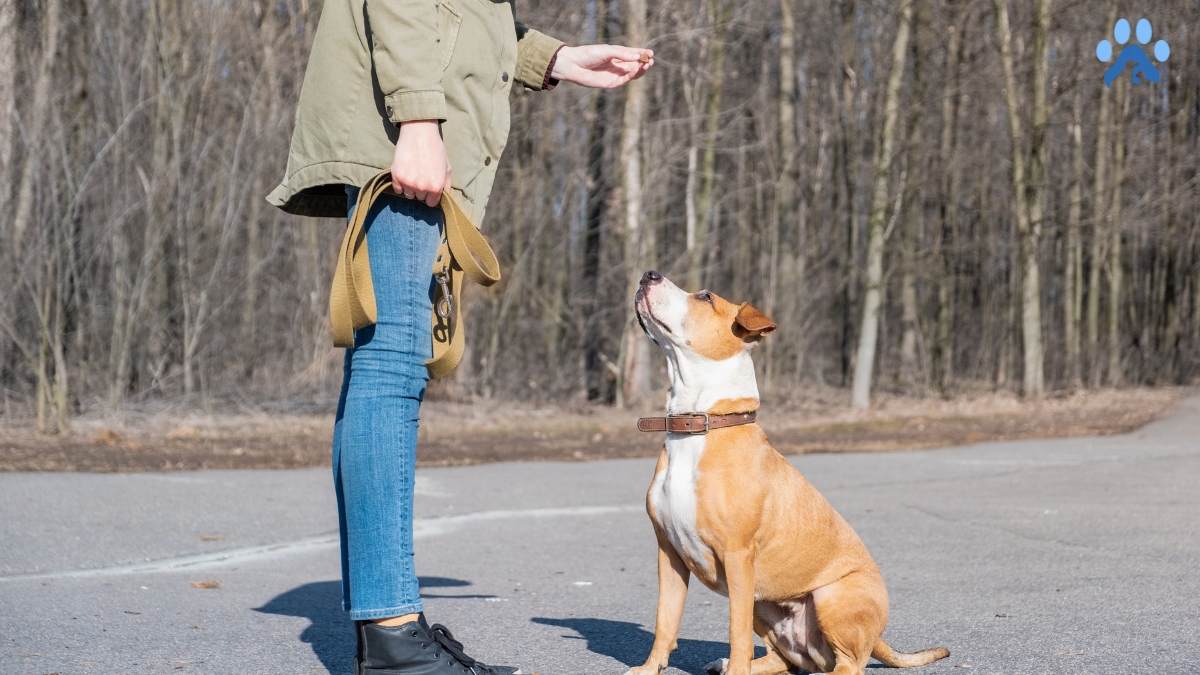Training your dog to sit is one of the most basic and essential commands you can teach them. It is not only a great way to improve your dog’s behavior and obedience, but it is also an important foundation for many other commands.
There are various methods you can use to train your dog to sit, including the lure and reward method, the capturing method, and the shaping method. Whichever method you choose, consistency, patience, and positive reinforcement are key. With practice and repetition, your dog will learn to associate the command with the desired behavior and will sit on the command.
It is important to note that every dog is different and may respond better to a specific training method. It is up to you to observe your dog’s behavior and personality and adjust your training approach accordingly. In this article, we will explore different methods for teaching your dog to sit and provide tips and tricks for success.
Why Teaching Your Dog to Sit is Important
Teaching your dog to sit is one of the most basic commands in dog training. It is an essential part of obedience training and should be one of the first commands that you teach your dog. Here are some reasons why teaching your dog to sit is important:
1. Control
The “sit” command can help you control your dog. When your dog is sitting, he is less likely to jump on people, run away, or engage in other undesirable behaviors. It also helps you to gain control of your dog in situations where he may be excited or anxious, such as when you are walking him in a crowded area or when guests arrive at your home.
2. Communication
Teaching your dog to sit is an excellent way to communicate with him. It is a clear signal to your dog that you are in charge and that he should listen to you. When you use the “sit” command, you are telling your dog to pay attention to you and to wait for further instructions.
3. Safety
Teaching your dog to sit can also help keep him safe. For example, if your dog is about to run into the street, you can use the “sit” command to stop him in his tracks. It can also help prevent your dog from jumping on people or other dogs, which can lead to fights or other dangerous situations.
4. Basic Dog Training
Teaching your dog to sit is an essential part of basic dog training. It is one of the first commands that your dog should learn, and it sets the foundation for other commands such as “stay” and “come.” It is also a great way to build trust and respect between you and your dog.
5. Obedience
Finally, teaching your dog to sit is an important part of obedience training. It teaches your dog to obey your commands, which is essential for a well-behaved and happy dog. It also helps to establish you as the leader of the pack, which is important for your dog’s overall behavior and well-being.
In conclusion, teaching your dog to sit is an essential part of basic dog training and obedience. It helps you to control your dog, communicate with him, keep him safe, and establish trust and respect between you and your dog. By teaching your dog to sit, you are setting the foundation for a well-behaved and happy dog.
Teaching Your Dog to Sit
Teaching your dog to sit is one of the most basic and essential commands that you should teach your furry friend. This command can be used to keep your dog from jumping on people, calm them down, and prepare them for other training commands. Here are the steps to follow when teaching your dog to sit:
Step 1: Luring Your Dog into the Sit Position
The first step in teaching your dog to sit is to lure them into the sit position. Start by holding a treat close to your dog’s nose and slowly move the treat toward its tail. Your dog will naturally lower their rear end to the ground as they follow the treat. Once they are in the sit position, give them the treat and praise them with positive reinforcement. Repeat this process several times until your dog is comfortable with the sit position.
Step 2: Adding the Verbal Cue
Once your dog is comfortable with the sit position, it’s time to add a verbal cue. Choose a cue word such as “sit” or “down” and say it in a clear and firm tone of voice every time your dog is in the sit position. This will help your dog associate the verbal cue with the action of sitting. Repeat this process several times until your dog responds to the verbal cue.
Step 3: Adding the Hand Signal
The final step in teaching your dog to sit is to add a hand signal. Choose a hand signal such as raising your hand or pointing down towards the ground. Use the hand signal every time you say the verbal cue. This will help your dog associate the hand signal with the action of sitting. Repeat this process several times until your dog responds to both the verbal cue and the hand signal.
Remember to always use positive reinforcement when teaching your dog to sit. Praise them with treats and verbal praise every time they perform the desired action. Be patient and consistent in your training process, especially if you’re working with puppies or older dogs. With time and practice, your dog will learn to sit on command and become a well-trained companion.
Training Your Dog to Stay Seated
Once your dog has learned how to sit on command, it’s time to teach them to stay in that position. The “stay” command is essential for keeping your dog in one place, especially in situations where they might become excited or agitated. Here are some tips for training your dog to stay seated:
- Start with short training sessions: Begin with short training sessions of 5-10 minutes, gradually increasing the time as your dog becomes more comfortable with the process.
- Use repetition: Repetition is key to reinforcing the “stay” command. Practice the command multiple times during each training session, and repeat the process over several days.
- Use capture: Capture is a technique where you reward your dog for performing the desired behavior on its own. When your dog sits on their own, say “stay” and reward them with a treat.
- Use training treats: Training treats are a great way to motivate your dog and reinforce the “stay” command. Use small, bite-sized treats that your dog loves and only give them as a reward for a successful “stay.”
- Add distractions: Once your dog has mastered the “stay” command in a quiet environment, it’s time to add distractions. Start with mild distractions, such as a toy or a person walking by, and gradually increase the level of distraction.
- Be patient: Training your dog to stay seated takes time and patience. Don’t get frustrated if your dog doesn’t get it right away. Keep practicing and rewarding your dog for their efforts.
By following these tips, you can train your dog to stay seated on command. Remember to be patient, use repetition, and reward your dog for their efforts, and you’ll have a well-trained dog in no time.
Using Treats and Positive Reinforcement
One of the most effective ways to train a dog to sit is by using positive reinforcement techniques. Positive reinforcement is a training method that involves rewarding your dog for good behavior. This can include giving your dog treats, praise, and attention, or using a clicker as a marker.
To train your dog to sit, start by getting your dog’s attention with a command word like “sit.” Once your dog is paying attention to you, hold a small treat in front of their nose and slowly move your hand up and over their head. This will cause your dog to naturally lower their rear end to the ground.
As soon as your dog sits, say “yes” or use a clicker as a marker and give them the treat. Repeat this process several times, gradually increasing the amount of time your dog is required to sit before receiving the treat.
It’s important to use small treats when training your dog to sit, as you don’t want to overfeed your dog or cause them to gain weight. You can also use other rewards like praise or attention to reinforce good behavior.
When using positive reinforcement, it’s important to be consistent and patient. Repeat the training process several times a day, and gradually increase the amount of time your dog is required to sit before receiving the reward.
In summary, using treats and positive reinforcement is an effective way to train your dog to sit. By rewarding your dog for good behavior, you can reinforce positive habits and encourage your dog to learn new commands.
Proofing Your Dog’s Sit Command
Once your dog has learned the “sit” command, it’s important to prove the behavior to ensure that your dog will sit in any situation. Proofing means teaching your dog to perform the behavior in different contexts, such as with distractions, at a distance, and for longer durations.
Distractions
One way to prove your dog’s sit command is to introduce distractions. Start by adding small distractions, such as a toy or a treat on the ground, and gradually increase the level of distraction. If your dog breaks the sit command, calmly and gently guide them back into the sit position and reward them when they comply.
Duration
Another way to prove your dog’s sit command is to increase the duration of the behavior. Begin by asking your dog to sit for a short period of time, such as a few seconds, and gradually increase the duration up to a minute or more. If your dog gets up before you release them, calmly guide them back into the sit position and reward them when they comply.
Distance
You can also prove your dog’s sit command by increasing the distance between you and your dog. Start by standing close to your dog and gradually move further away. If your dog gets up before you release them, calmly guide them back into the sit position and reward them when they comply.
Greyhounds
Greyhounds can be a bit more challenging to train to sit because of their unique body structure. They have long, lean bodies and short, powerful legs, which can make it difficult for them to sit comfortably. To train a greyhound to sit, it’s important to use a lure, such as a treat, and reward them for any attempt to sit, even if it’s not a perfect sit.
Response
It’s important to observe your dog’s response to the sit command in different situations and adjust your training accordingly. If your dog is struggling with a particular aspect of the sit command, such as duration or distance, go back to the basics and work on that aspect before moving on to more challenging situations.
Request
Finally, when proofing your dog’s sit command, it’s important to make the request clear and consistent. Use the same verbal and hand signals every time you ask your dog to sit and reward them immediately when they comply. With consistent training and practice, your dog will learn to sit on command in any situation.
Sources:
Frequently Asked Questions
How to teach a stubborn dog to sit?
If your dog is being stubborn and not responding to your commands, it’s important to remain patient and consistent. One effective way to teach a stubborn dog to sit is by using positive reinforcement. Offer your dog a treat and praise them when they follow your command. Repeat this process consistently, and your dog will eventually learn to sit on command.
How to teach an older dog to sit?
Teaching an older dog to sit is similar to teaching a younger dog. However, it’s important to keep in mind that older dogs may have physical limitations that make it difficult for them to sit. Start by using a treat to lure your dog into a seated position. If your dog has trouble sitting, try using a cushion or a soft surface to make it more comfortable for them.
How to teach a dog to shake?
Teaching your dog to shake is a fun trick that can also be useful in certain situations. Start by commanding your dog to sit, then gently take their paw and shake it while saying “shake.” Repeat this process consistently, and your dog will eventually learn to shake on command.
How to teach your dog to stay?
Teaching your dog to stay is an important command that can help keep them safe in certain situations. Start by commanding your dog to sit, then hold your hand up in front of them while saying “Stay.” Gradually increase the amount of time your dog stays in the seated position before giving them a treat and praise.
How to train a dog to lay down?
Teaching your dog to lay down is similar to teaching them to sit. Start by commanding your dog to sit, then use a treat to lure them into a laying position. Once your dog is laying down, give them a treat and praise. Repeat this process consistently, and your dog will eventually learn to lay down on command.
What are three effective ways to train a dog to sit?
- Use positive reinforcement: Offer your dog a treat and praise them when they follow your command.
- Be consistent: Repeat the command consistently, and your dog will eventually learn to sit on command.
- Use hand signals: In addition to verbal commands, use hand signals to reinforce the command and help your dog understand what you want them to do.
Remember, training your dog takes time and patience. Consistency is key, and positive reinforcement is a powerful tool in helping your dog learn new commands.



